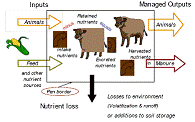Biological Systems Engineering, Department of

Department of Agricultural and Biological Systems Engineering: Presentations and White Papers
Date of this Version
2008
Document Type
Article
Abstract
The conversion of lignocellulosic biomass into ethanol is an encouraging technology in the face of concerns over global warming and finite energy resources. In the southeastern United States, coastal bermudagrass shows potential for use as an energy crop for ethanol production. A review of the literature has shown that research has been done on the dilute sulfuric acid pretreatment of costal bermudagrass at 121ºC prior to enzymatic hydrolysis. This study examined dilute acid concentrations of 0.3%(w/w) to 1.2%(w/w) at temperatures from 120C to 180C over residence times of 5 to 60 minutes in an effort to optimize the pretreatment process for sugar production. Bermudagrass was pretreated in a 1:10 mixture with dilute sulfuric acid. The pretreated solids were enzymatically hydrolyzed and the resulting reducing sugars have been quantified using a DNS assay method. Data is still being generated,, but from average total reducing sugar data that has been analyzed, the pretreatment conditions of 1.2% sulfuric acid (w/w) for 30 minutes yields optimum sugar production of 300 mg sugars / gram of un-pretreated biomass. Carbohydrate and lignin content will be measured before and after pretreatment in addition to an estimation of reducing sugars in the pretreatment filtrate in future work.


Comments
An ASABE Meeting Presentation
Paper Number: 084148